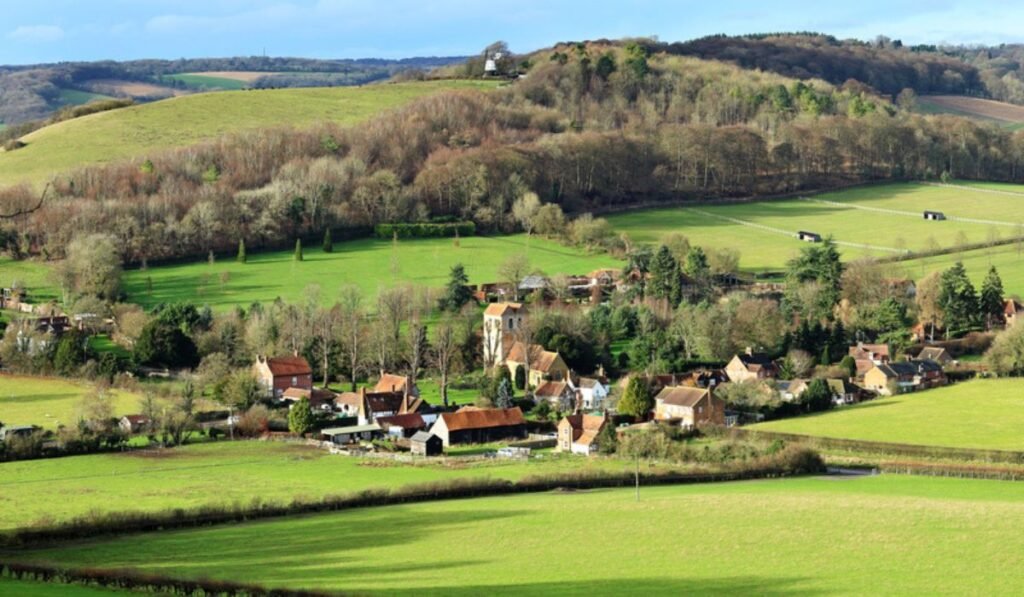Rural living is gaining popularity as people seek solace from urban life. This lifestyle offers a variety of landscapes and a relaxed pace, promoting a connection with nature and a balanced lifestyle. Outdoor activities and a deeper connection to the environment improve well-being and reduce stress levels.
In recent years, many people have shifted from urban life to rural settings, opting for the peace and tranquility of rural environments, driven by the attractive lure of wide-open spaces, a slower pace, and proximity to nature. It’s a trend particularly noticeable in areas such as Collin County, where real estate experts like Collin County real estate experts Town and Ranch Real Estate Group have guided many in finding their dream rural homes. They provide valuable advice on discovering properties that yield myriad benefits of country living and preparing prospective residents for the unique challenges they might face.
While rural areas promise a peaceful retreat from urban chaos, the transition requires a comprehensive understanding of both benefits and hurdles. Successfully adapting to this kind of living involves not just finding the right property but also thoughtful planning, engaging with the community, and adopting modern solutions to traditional rural issues.
Benefits of Living in the Countryside
Choosing to live in the countryside brings numerous advantages. The stunning natural landscapes, abundant wildlife, and open skies are just the beginning. Living here allows for meaningful engagement in activities such as farming and gardening, which provide food, accomplishment, and sustainability. The lifestyle encourages a connection with the earth that many find highly fulfilling.
Moreover, rural areas often foster tighter community bonds. Unlike the anonymity frequently experienced in urban centers, rural residents are likelier to know their neighbors and engage in community events. This sense of belonging and support is a crucial element that draws many to rural areas. Community events and gatherings are not just social outings but are vital for maintaining the social fabric in these less densely populated regions.
Challenges Faced in Rural Settings
Despite its appeal, rural living does come with its challenges. Many rural areas lack immediate access to amenities that urban dwellers take for granted. Healthcare and educational facilities may be limited, requiring longer travel distances or innovative solutions to meet these needs locally. The digital divide is another significant challenge. With fewer internet service providers and limited broadband speeds, staying connected for both work and leisure can be more challenging.
Additionally, infrastructure limits can include less developed roads and utilities, which may necessitate patience and adaptability. Residents might have to invest in personal transportation solutions and adjust to longer commute times for work and leisure activities.
Modern Solutions to Traditional Problems
However, modern innovations are continually transforming rural life. Technologies such as solar and wind power provide sustainable energy solutions that are both environmentally friendly and reliable. These renewable energy sources can reduce dependency on less sustainable and often intermittent traditional power supplies. Technological advances are also closing the digital gap, offering new possibilities for education and work environments in rural settings.
The increasing availability of satellite internet, for instance, offers hope for improving connectivity, enabling remote work and digital education. Access to these technologies can invigorate rural economies and make the rural lifestyle more attainable for tech-savvy individuals.
Comm and Economic Growth
Economic stability in rural areas often relies on fostering local businesses and markets. Small businesses are the backbone of rural economies, providing essential resident services and job opportunities for residents. They also promote sustainability by emphasizing local production and reducing transportation needs.
Community development initiatives are vital in this regard, helping to introduce essential services and improve the quality of life. These initiatives often include improving local infrastructure, access to healthcare, and educational opportunities, which can help attract new residents and foster community strength.
A focus on community development plays a critical role in revitalizing rural areas. By offering a blend of traditional values and modern conveniences, rural areas remain vibrant and appealing.
Tips for Prospective Rural Residents
For those considering a rural lifestyle, preparation and research are essential. Prospective residents should spend time in the community before moving, get to know potential future neighbors, and attend local events. This helps in understanding local customs and community dynamics, making integration smoother.
Engaging in conversations with current residents can provide valuable insights into everyday life and potential challenges. Being proactive, adaptable, and community-focused are keys to successfully transitioning to rural living.
Balancing Tradition and Modernization
Achieving a balance between preserving tradition and embracing modernization is crucial for rural areas. Rural communities can maintain their heritage and remain vibrant by fostering sustainable practices and integrating new technologies. Successful rural communities find ways to preserve their cultural history while providing modern amenities.
Stories of successfully balanced rural communities abound, demonstrating how a commitment to heritage and innovation can lead to thriving environments. These communities serve as blueprints for others seeking to strike their own balance.
Conclusion: The Future of Rural Living
The heartfelt desire to retreat to quieter, more harmonious environments draws many to rural areas, which become even more appealing when equipped with the right mix of planning and resources. Conversations with traditional values, rural living becomes sustainable and glorious in offering personal satisfaction and community contentment.
With continued innovation and a focus on harmonious living, the future of rural areas is bright, promising robust, thriving, and sustainable environments for all who choose to embrace them.
